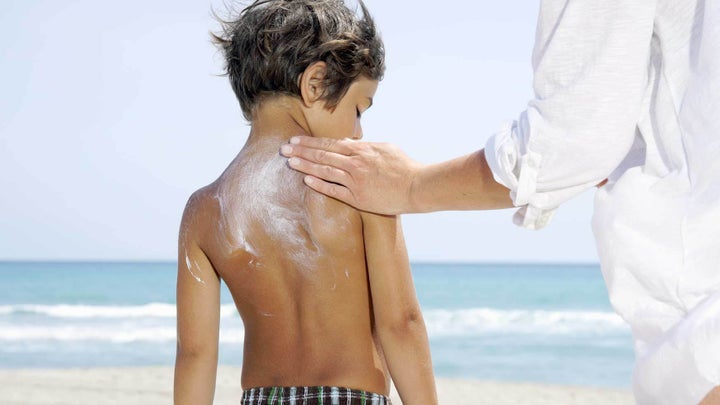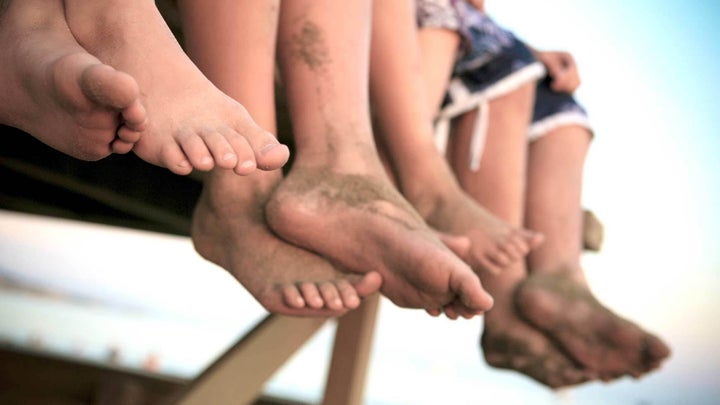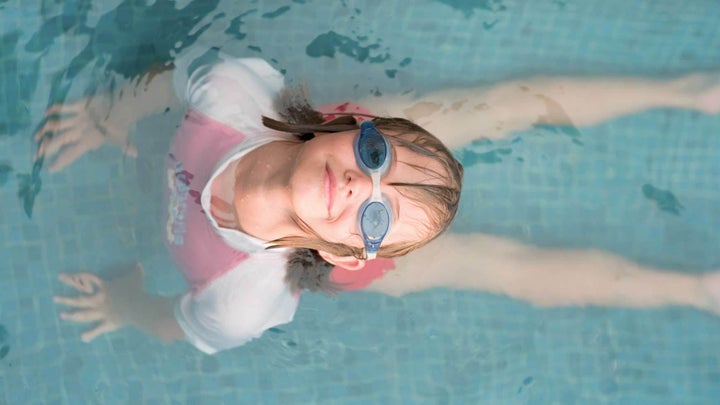
By Amanda Morin
Summer is a time for relaxing. But some of the sounds, smells and sensations that come with the fun can overwhelm kids with sensory processing issues. These tips can help your child manage challenges and enjoy the summer.
1. Being Barefoot
The challenge: Many kids look forward to summer so they can shed their shoes. But for kids who are sensitive to touch, hot sidewalks and prickly grass can be too much input to manage.
How you can help: Consider whether it’s important for your child to have the barefoot experience. If not, let him wear shoes or socks on the grass and sidewalk. Buy an inexpensive pair of sneakers that he can get wet. He can wear them at the beach and poolside.
2. Wearing Sandals or Flip-Flops
The challenge: The feel of straps, thongs between toes or rubber inner soles can bother kids with touch sensitivity. Sound-sensitive kids may react to the slapping noise flip-flops make. And smell-sensitive kids may find the odor of leather, rubber or plastic overwhelming.
How you can help: Take your child shopping for sandals. He can try them on, walk in them, and even smell them if he needs to. Look for alternative types of shoes that might work better, such as slides, garden clogs or water shoes.

3. Sunscreen
The challenge: Applying sunscreen can be hard when your child doesn’t like being touched. Sticky lotions and tickly spray sunscreens can also overwhelm kids with sensory issues. The strong smells can be an issue too.
How you can help: Buy sunscreen wipes instead of lotions. Or try using color-fading sunscreen so your child can see when you’re almost done. It may also help younger kids if you describe what you’re doing as you do it. For example: “I’m going to put some on your legs now. This may tickle your knee.” Encourage older kids to put on sunscreen while you supervise.

4. Bug Repellent
The challenge: Many bug sprays have a strong chemical odor that’s unpleasant to even to people who don’t have sensory issues. For kids who are sensitive to tastes and smells, it can be unbearable.
How you can help: Try a combination sunscreen-bug repellent. You only have to apply one product, and it’s less likely to have a chemical smell. You may also want to try products with natural ingredients. For kids who don’t like lotions or sprays, consider using insect repellent bracelets.
5. Bugs and Bug Bites
The challenge: When bugs are buzzing around, it can really bother kids who are sensitive to sights or sounds. Some kids with sensory issues are also hyperaware of itchy bites or insects on their skin.
How you can help: If you can, avoid being outside during dawn and dusk, which are prime times for mosquitoes. Have your child wear a wide-brimmed hat to help keep bugs away from his eyes and ears. Carry anti-itch sticks or cream and adhesive bandages to treat and cover bites. And make sure your child uses some sort of insect repellent.

6. Sand
The challenge: Walking barefoot on hot or wet sand can be a challenge for kids who are oversensitive to touch or temperature. Sand also sticks to wet skin ― a gritty feeling that some kids can’t tolerate.
How you can help: Let your child wear water shoes or old sneakers on the beach. Use an extra-large blanket for sitting on the sand. For younger kids, bring along a lightweight long-sleeve shirt and pants (sweatpants work well) to wear over their bathing suit as they get used to playing in the sand.
7. Swimming Pools
The challenge: Swimming can be soothing to kids with sensory issues. But swimming pools may not be. The combination of crowds, the strong smell of chlorine and lots of echoing noise can be overwhelming.
How you can help: Not all pools use chlorine. Ask your local pool if they do and at what time of day the level is at its highest. Ask the same question about crowds. Have your child try nose plugs, earplugs, and goggles or face masks to see if they reduce sensory input.

8. Swimsuits
The challenge: Swimsuits present unique challenges for kids who are sensitive to clothing. Both tight and loose suits can cause discomfort. The feel of wet swimsuits can be problematic, too.
How you can help: Try out swimsuits at home with enough time to return them and buy something else if necessary. Buy a rash guard if your child doesn’t like his skin exposed. Encourage your child to wear his suit in the shower or tub to get used to it being wet. And bring dry clothes to the beach or pool to wear home.
This post originally appeared on Understood.org.
More on Understood:
Does your child have sensory processing issues? Discuss your successful sensory-friendly parenting techniques Understood Community.